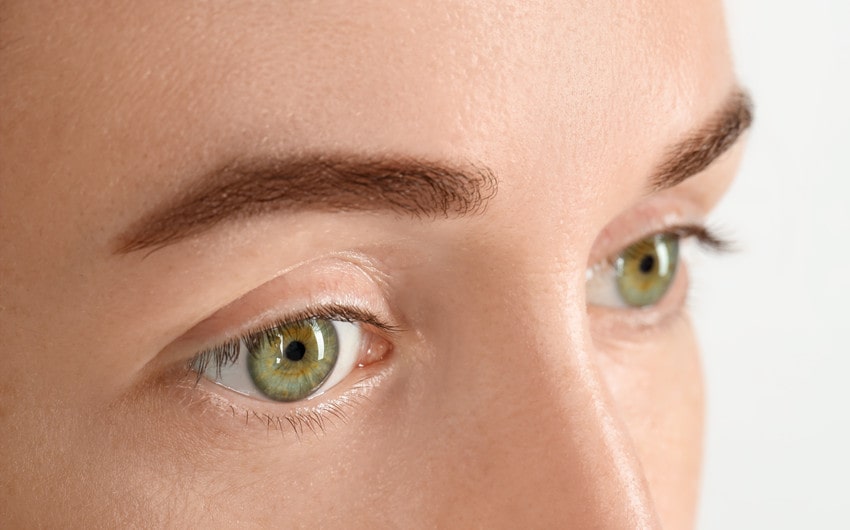Why Green Eyes Are So Rare and What Makes Them So Unique
I’ve always found green eyes hypnotic. There’s something quietly magnetic about them—like they’re always keeping a secret. But they’re also incredibly rare. I started noticing that, outside of movies or the occasional book character, I almost never saw them in real life. That curiosity got to me. Why are green eyes so rare? What’s going on beneath that color? I went looking for answers—and what I found only made them more fascinating.
It Starts With Melanin—But Not Too Much or Too Little
Eye color comes down to one core pigment: melanin. It’s the same stuff that determines skin and hair color. But the melanin in your eyes is concentrated in the front part of the iris—and the amount determines the shade you see.
People with brown eyes have high melanin levels. Blue eyes have very little. Green eyes sit somewhere right in the middle. But here’s where it gets strange: green eyes don’t actually contain green pigment. In fact, no human eyes do.
The “green” we see is an illusion. It’s created by a combination of Rayleigh scattering—which scatters light in a way that makes blue eyes look blue—and a small amount of yellow or light brown pigment. When the light hits that blend just right, our brains perceive it as green. It’s not pigment we’re seeing. It’s physics mixed with pigment. That subtle mix is why green eyes look so different depending on lighting conditions.
Green Eyes Are Rare Because of Complex Genetics
Eye color inheritance isn’t as simple as I once thought. We used to learn about it like a basic dominant vs. recessive thing: brown wins, blue and green are recessive. That turns out to be way oversimplified.
In reality, at least 16 different genes contribute to eye color. But two genes—OCA2 and HERC2—play the most significant roles. They influence how much melanin gets produced and where it’s distributed in the iris.
To end up with green eyes, a person needs a very specific mix: low to moderate melanin levels (not enough for brown, too much for blue), plus the right light-scattering structure in the iris. This combination of traits is genetically rare. Both parents must carry the necessary alleles, and even then, it’s not guaranteed. It’s like rolling dice and hitting the perfect number—not impossible, but definitely uncommon.
That’s why even in families with green eyes, not every child inherits them. The rarity isn’t just about the number of people who could have green eyes—it’s about how few people actually do.
How Rare Are Green Eyes, Really?
Only around 2% of the world’s population has green eyes. That makes them rarer than blue (about 8–10%) and dramatically rarer than brown (which dominates globally at 70–80%). Even hazel eyes are more common, falling somewhere around 5% of the population.
Green eyes are most frequently found in people of European ancestry, especially those from regions like Ireland, Scotland, Iceland, and parts of Scandinavia. In Ireland, for example, estimates suggest that up to 16% of the population may have green eyes—the highest rate in the world. But even there, they’re still far from a majority.
In much of the world—including Asia, Africa, and South America—green eyes are almost nonexistent. When they do appear, it’s usually due to genetic mixing or recessive traits carried down from generations ago. Their scarcity outside of certain regions is what makes them feel so unexpected and striking when you do spot them.
There’s No Evolutionary Advantage—Just Genetic Luck
Most dominant human traits evolve for a reason—usually to help us survive. Brown eyes, for instance, offer strong UV protection, which is beneficial in sunny equatorial regions. That’s why they’re the most common worldwide. Blue eyes are thought to have evolved in northern Europe, possibly due to low-light environments or linked traits like lighter skin that aids in vitamin D production.
Green eyes? They offer no known survival benefit. There’s no scientific evidence that they improve vision, protect against sunlight, or provide any physical advantage. They appear to be a neutral mutation—one of those random quirks of genetics that slipped through the cracks and stuck around because, well, why not?
Some researchers speculate that green eyes may have been socially favored in certain cultures, which allowed the genes to persist. But ultimately, their rarity isn’t tied to any functional edge. They’re just one of those beautiful genetic accidents that happened to survive.
Green Eyes Carry a Ton of Cultural Weight
Because they’re so rare—and hard to explain—green eyes have attracted myths and superstitions for centuries. In many cultures, they’ve been linked with magic, mystery, and even danger. In medieval Europe, women with green eyes were sometimes accused of witchcraft. In other stories, green-eyed characters had the ability to see the future or manipulate emotions.
Even today, media and literature lean into the mystery. Green-eyed characters are often portrayed as alluring, unpredictable, or somehow different from the crowd. Think of how often villains or antiheroes are given green eyes. Or how often romantic leads have that one unforgettable stare. It’s not an accident—green eyes carry cultural symbolism that makes them feel otherworldly, even now.
I don’t know if any of that’s true, but I do know that when someone with green eyes looks at you, it’s hard to forget.
Yes, They Can Seem to Change Color
One of the things that makes green eyes feel magical is how much they change. I’ve seen friends with green eyes whose eye color seems to shift depending on their mood, the weather, or even what shirt they’re wearing. And they’re not imagining it. Green eyes are highly reactive to lighting conditions, often appearing more blue, gray, or hazel depending on the environment.
This happens because the iris doesn’t have green pigment—it has low melanin and a scattering surface. That means the light bouncing back changes constantly. Shadows, reflections, and even pupil dilation affect how the color appears.
On top of that, green eyes often develop slowly. Babies born with green eyes usually start out with blue or gray. The true color can take up to three years to fully emerge, depending on how much melanin builds up. So even if green eyes are hiding in the gene pool, they don’t always reveal themselves right away.
They’re Also More Sensitive to Light
Here’s something I didn’t expect to learn: people with lighter eye colors—like green or blue—are more sensitive to bright light. Less melanin means less protection from sunlight and glare. That’s why someone with green eyes might squint more on sunny days or feel more discomfort under harsh artificial lighting.
That sensitivity also shows up in medical settings. Light-eyed individuals are slightly more prone to certain eye conditions like macular degeneration. It’s not a guarantee, but it’s worth being aware of. Wearing sunglasses isn’t just a fashion choice—it’s a practical one for protecting those rare green irises.
Green Eyes: A Scientific Rarity, A Cultural Fascination
So why are green eyes so rare? It’s a perfect storm of genetic complexity, geographic concentration, and biological illusion. They don’t offer a practical advantage. They’re not favored by evolution. They just exist—beautiful, unpredictable, and quietly rebellious against the rules of heredity.
And that’s exactly what makes them unforgettable. They’re rare not just in numbers, but in how they’re made. They reflect light and genetics and mystery all at once. Green eyes don’t just look different—they feel different. Like something you weren’t supposed to see, but did.






